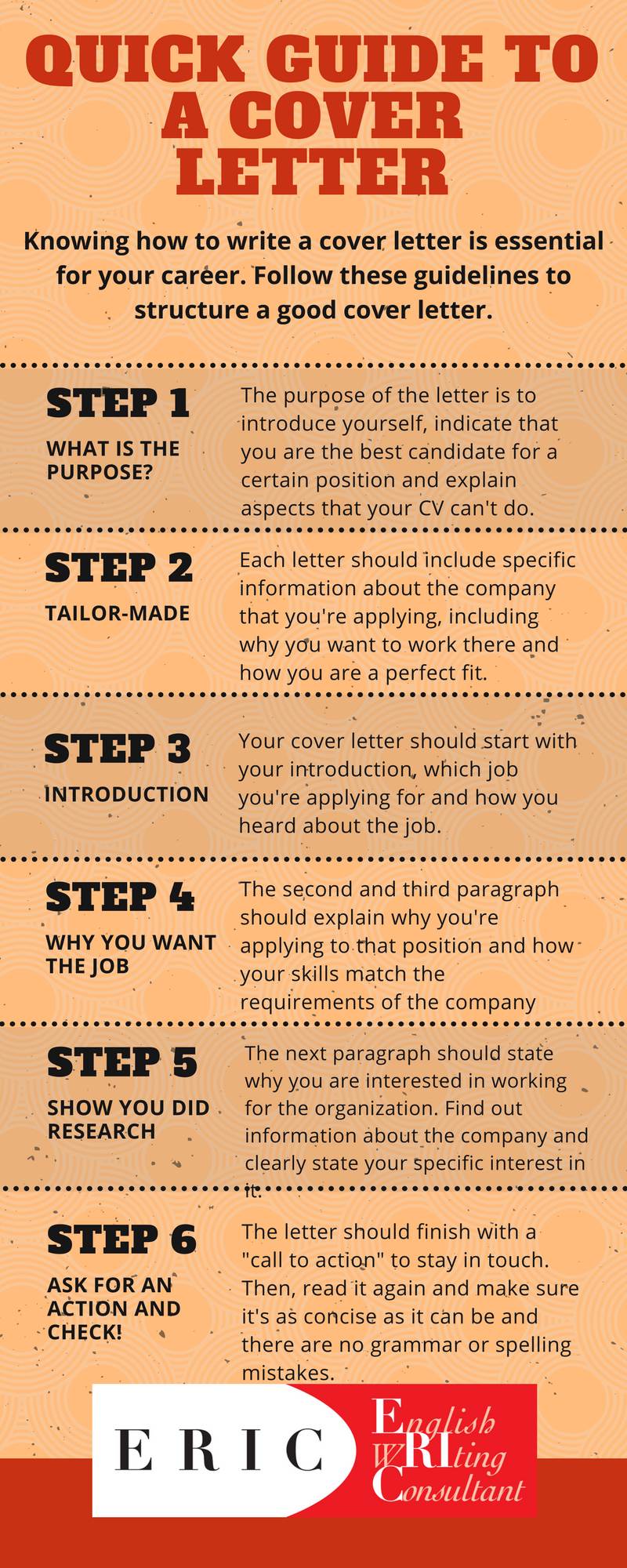English wRIting Consultant (ERIC)
How to write a Cover Letter
Last updated: 2021/3/22
As part of a job application process, many employers ask for a cover letter along with a resume. While some may think that all relevant information is contained in the resume and that a cover letter is useless, it is actually a pretty important part of an application: it presents why a company should hire you. A good cover letter enables you to stand out from the lot and, hopefully, get the job.
To begin with
- A good cover letter should include:
- your name, email address and phone number at the top of the page on the right
- the name of the business and the contact person’s full name on the left
- the date you wrote the letter on the right
- a reference line (e.g., “Re: Application for an Intern position”)
- an address to the reader directly (e.g., “Dear Mr. Anderson” – try to avoid using “To whom it may concern” if you can)
- an opening statement that briefly introduces you to the reader
- a main body that highlights qualities and characteristics you have that are relevant to the job
- a closing paragraph asking to arrange an interview
Write and send one even if not explicitly asked for
Some applications do not explicitly require a cover letter. However, unless it is clearly indicated not to send one, a cover letter should be written and sent.
Do not write a general, all-purpose cover letter
When job hunting, it is usual to send dozens of applications. Do not get tempted to send the same cover letter to every firm. A cover letter is a place where you should express yourself and show motivation/interest for the specific job you are applying for. In order to make your letter stand out, it should be customized for the specific job you are applying for.
Highlight relevant qualifications
Among your skills or qualifications written in your resume, pick one or two that are relevant to the job you are applying for. Since you can express yourself more lengthy in the cover letter than in the resume, provide specific examples of a time where you demonstrated each of these skills/qualifications.
Follow up on the resume
Again, unlike the resume where you are restricted in length, you can go more into details in the cover letter. Use this opportunity to provide more details on points in your resume that needs more explaining. For example, if your resume shows a gap year in our education, explain it in your cover letter.
Study samples and templates
There are plenty of cover letter examples on the Internet. Go read them. Do not be tempted to copy-paste them: cover letters should be personal (talk about your experiences) and specific to the job you are applying for.
Proofread it
Grammar and spelling errors give a bad impression of yourself. Thoroughly proofread your cover letter before sending it. After writing it, take a few hours and read it out loud. Asking other people, friends, family, …, to proofread it can be a good idea.






